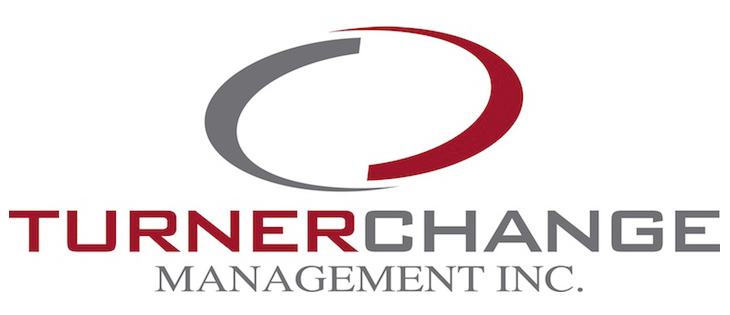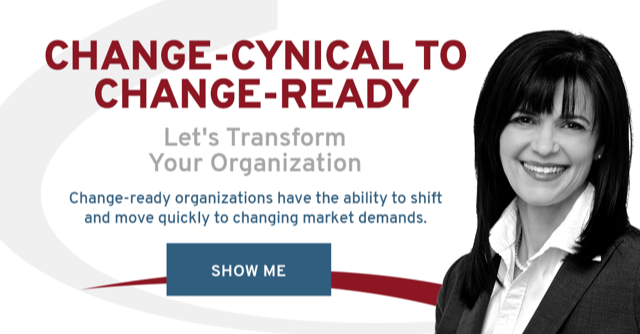I don’t know any organization that has the luxury of shutting down its operation to enable the adoption of new activities. You are constantly navigating the adoption of new actions and behaviours while attending to the needs of running your business.
That’s what made this organization’s commitment to change and, ultimately, their results so remarkable. They understood they couldn’t accomplish their intended outcome with a few people working off the side of their desks. The leaders consciously made the space, integrated change leadership practices, and prioritized the work needed for the transformation.
Recognizing the Need for Change
The newly reorganized company was operational. The new CEO, the executive team and the employees were in place.
However, a closer look revealed that the organization was not seeing the intended efficiencies, client relationships, and other desired outcomes of the reorganization. There were duplicated processes, resulting in rework and mistakes. One area was years behind in their work. Employees were struggling, morale was low, and there was a high level of conflict among the leaders.
The CEO asked me to help them identify the changes and achieve the benefits of the reorganization.
Defining their Outcome Story
We began with the executive team defining the organization’s outcome story. Because the company had been created through a series of departmental reorganizations, there was no consensus on the company’s intended outcome.
The leaders began by describing what they wanted the company to look and feel like when operating as intended. Together with my help, the leaders defined and wrote their outcome story.
With a clear and concrete outcome story, we began to identify the specific changes needed. The executive team realized the changes were more complex and extensive than initially thought. It became apparent that no part of the organization would be untouched. The leaders were concerned about achieving the needed changes. Their employees were already overloaded and overwhelmed just managing their everyday tasks.
 That’s when they made one decision that enabled them to achieve results they didn’t think were possible. Within three months, they transformed one area that was years behind in their workload to being current. A process that took employees a year to complete was shortened to six weeks. They created an environment that resulted in happier, more relaxed employees who inspired other areas to achieve similar results.
That’s when they made one decision that enabled them to achieve results they didn’t think were possible. Within three months, they transformed one area that was years behind in their workload to being current. A process that took employees a year to complete was shortened to six weeks. They created an environment that resulted in happier, more relaxed employees who inspired other areas to achieve similar results.
Active Employee Involvement
The decision the executive team made was to let go. The leaders recognized the only way any real change could occur and stick was if they trusted and actively involved the employees.
The executives then made space and created a change team. The team included employees from every area of the business and different levels of the organization. Their outcome story described the organization as streamlined, with people working together across departments and clearly defined and documented processes.
The team used the outcome story and engaged in open conversations to discuss where they could improve. Nothing was off-limits.
Often, leaders don’t engage their teams in active involvement because they believe it will slow down decision-making and take longer to adopt the new activities and behaviours. There is a perception that active involvement means everyone makes every decision. Leaders also often have concerns that the people involved will perceive themselves as making all the decisions.
The leaders addressed both concerns by establishing a clear structure and setting expectations. As one leader stated, “we wanted to empower them, but they needed to realize that we can’t give them all the power. That management will still be making some decisions.”
The Collateral Benefits of Active Involvement
The benefits of actively involving the employees were felt throughout the organization. That’s because they took the concept of active involvement beyond just the team. The team nor the leaders saw themselves as a self-contained entity responsible for making the changes in the organization.
The team’s structure meant they perceived themselves as the facilitators and enablers of change for the whole organization. Each change team member actively involved and trained other members within their section of the organization. They openly talked about what was happening encouraged conversation about the new processes and what it meant to be a cross-functional team with streamlined processes.
Even people who were not directly on the team felt included and participated in the change process. The level of collaboration between departments increased. Employees got to know each other and understand another person or department’s work. It became more difficult for one department to point the finger at another department and blame them for the problem. Silos that had been there for years were breaking down through the conversations. Long-held assumptions were invalidated, opening the opportunity for new discussions.
Active Involvement helps Create the Time and Space for Change
For this organization, like every other organization, time was a factor. Employees were facing a backlog of work and were overwhelmed with the daily operation. Finding time for all the changes was a challenge. So, the leaders and the team cleared the space and time. They prioritized the changes and reprioritized operational activities.
There is often a misconception that actively involving people will take more time. This team demonstrated that actively involving people saved time and helped create the time needed to adopt changes. One team member talked about the support she received from her workgroup. “They see the importance as well and are willing to take on a little more so that I can give time to the initiative.”
Leaders also didn’t add the work needed to enable the changes as one more thing on an already overloaded plate. They helped reprioritize and adjust other timelines. As one team member stated, “I think if managers weren’t on board or supporting it, I think it would be more difficult. I don’t think we could be as productive as we have been.”
Building Change Capacity
There is still lots of change, but it was less chaotic, and employees felt in control. As one employee stated: “… just knowing that a goal is achievable makes you happier, makes you work a little harder.”



